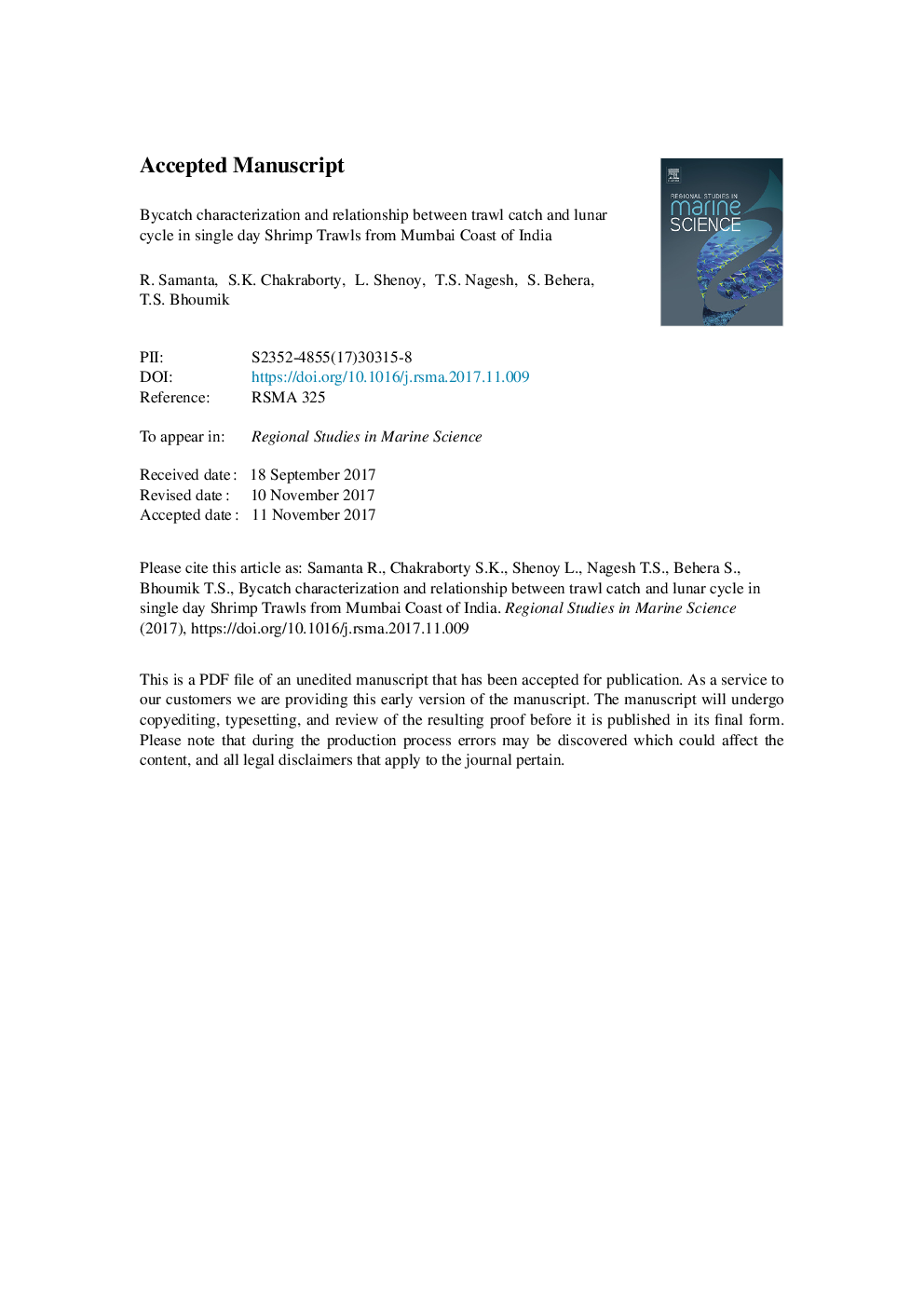| Article ID | Journal | Published Year | Pages | File Type |
|---|---|---|---|---|
| 8872651 | Regional Studies in Marine Science | 2018 | 19 Pages |
Abstract
Bycatch and discards are common and recurrent problems faced by fishing industry all over the world. In India, the bycatch issue is more complex due to the multi-species and multi-gear nature of the fisheries. Trawling remains a controversial method due to the non selectivity nature of the trawl net. A study was conducted during October, 2015 to May, 2016 using shrimp trawls in the traditional trawling grounds of Mumbai coast to reveal the catch composition, bycatch characterization and monthly variations in catch per unit effort (CPUE) generated by single day trawlers. The maximum catch was contributed by Sciaenids (35%), followed by Sharks and Rays (10%), Anchovies (10%), Prawns (8%), Bombay duck (6%) and other demersal species. The study identified 143 species including juveniles of commercially important fishes and shellfishes from the shrimp trawl bycatch. Catch was increased from new moon to full moon and from full moon to new moon irrespective of fishing effort. Mean monthly bycatch generated by shrimp trawling ranged from 11.82 to 20.65kghâ1, in different months with an overall average of 16.82±0.97 (SE, n=8) kghâ1. The present study highlighted the urgent need for improving the selectivity of the trawl system, in order to mitigate its impacts on non-targeted resources. The results will be beneficial for researchers and policy makers associated with a co-ordinated plan to address trawl bycatch management options.
Related Topics
Physical Sciences and Engineering
Earth and Planetary Sciences
Oceanography
Authors
R. Samanta, S.K. Chakraborty, L. Shenoy, T.S. Nagesh, S. Behera, T.S. Bhoumik,
